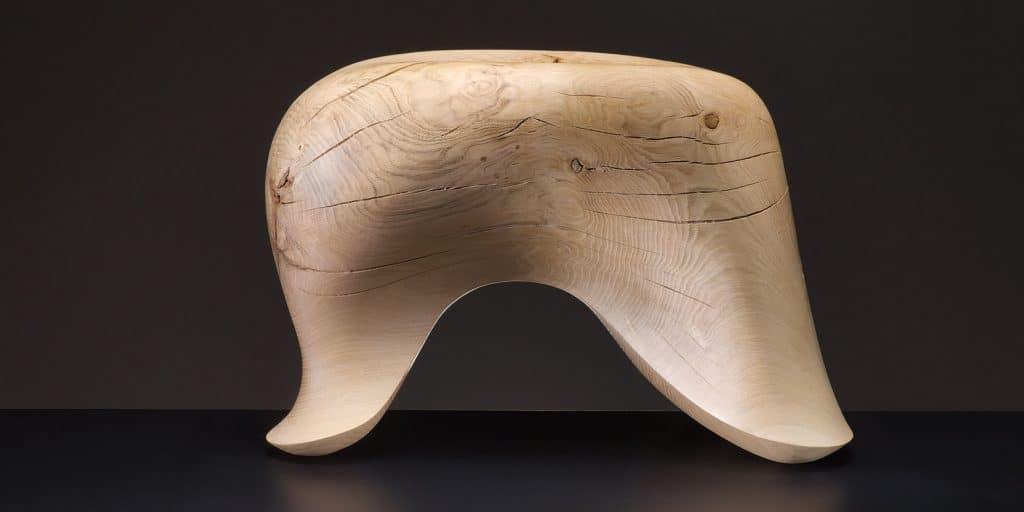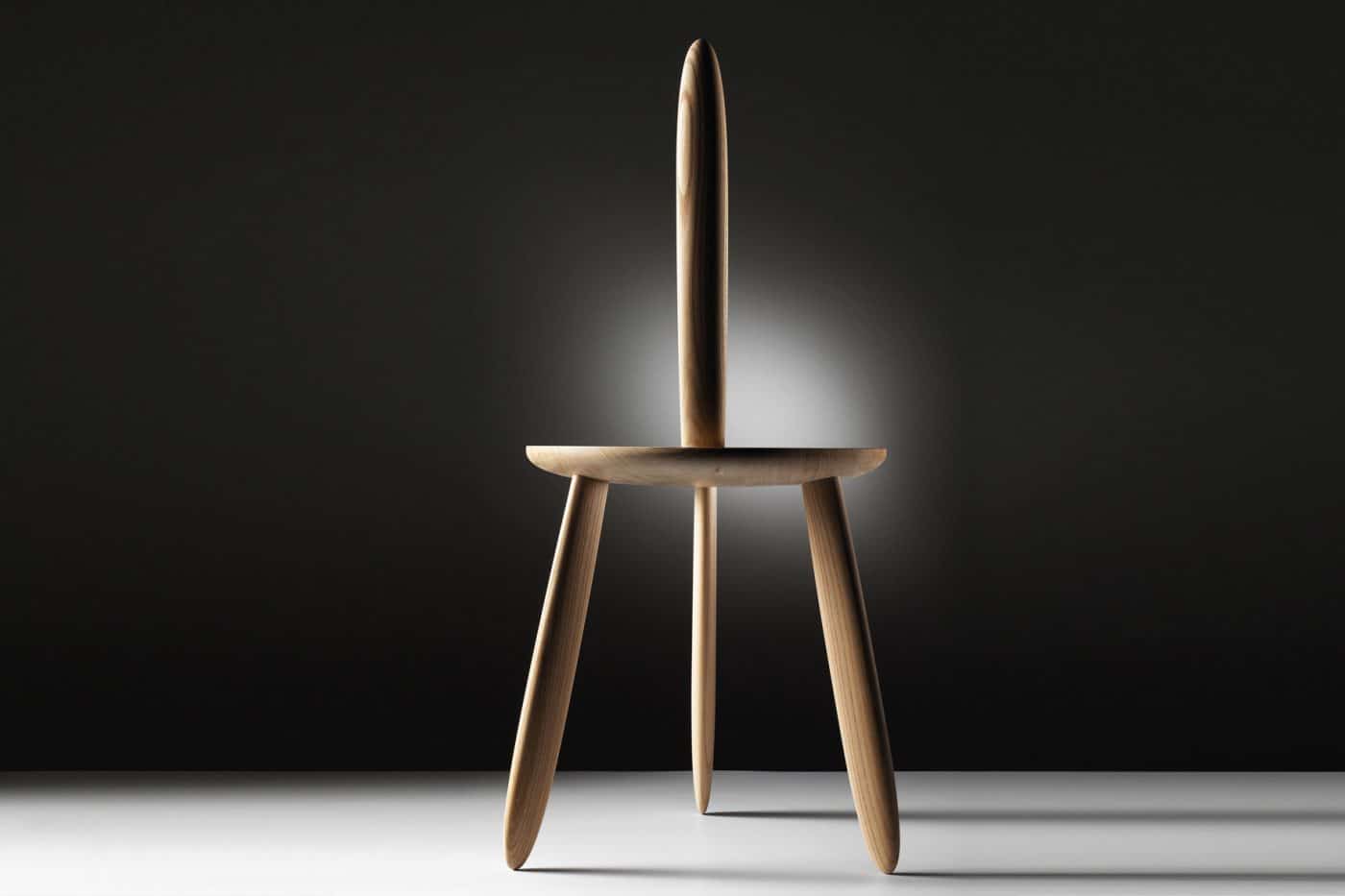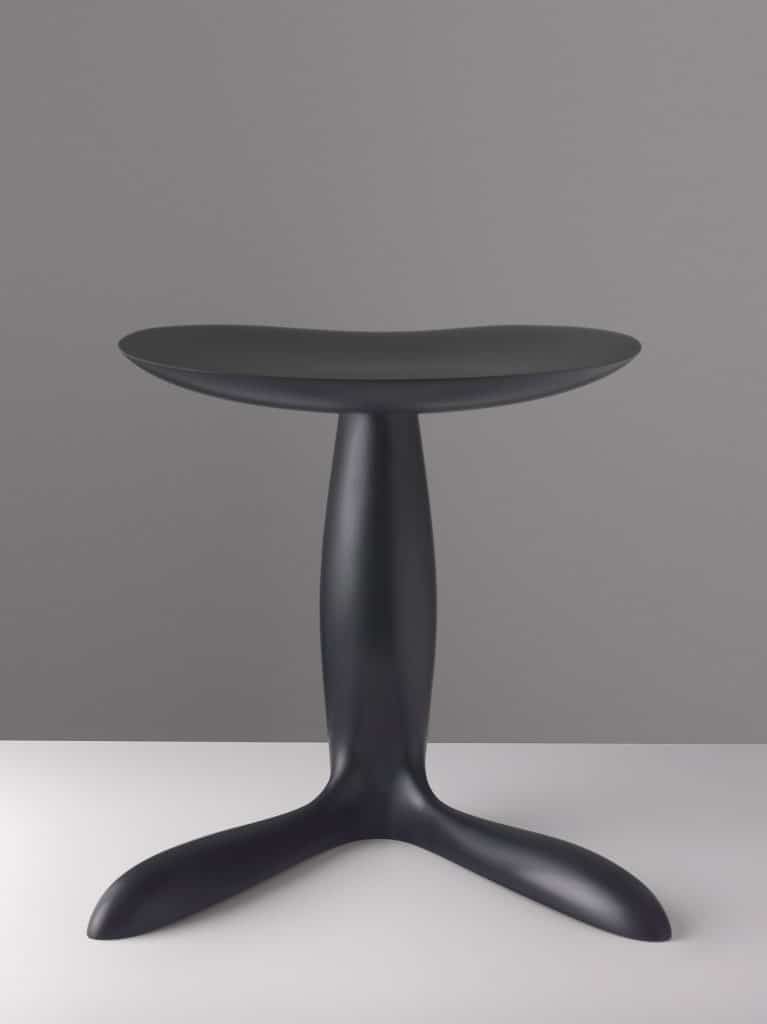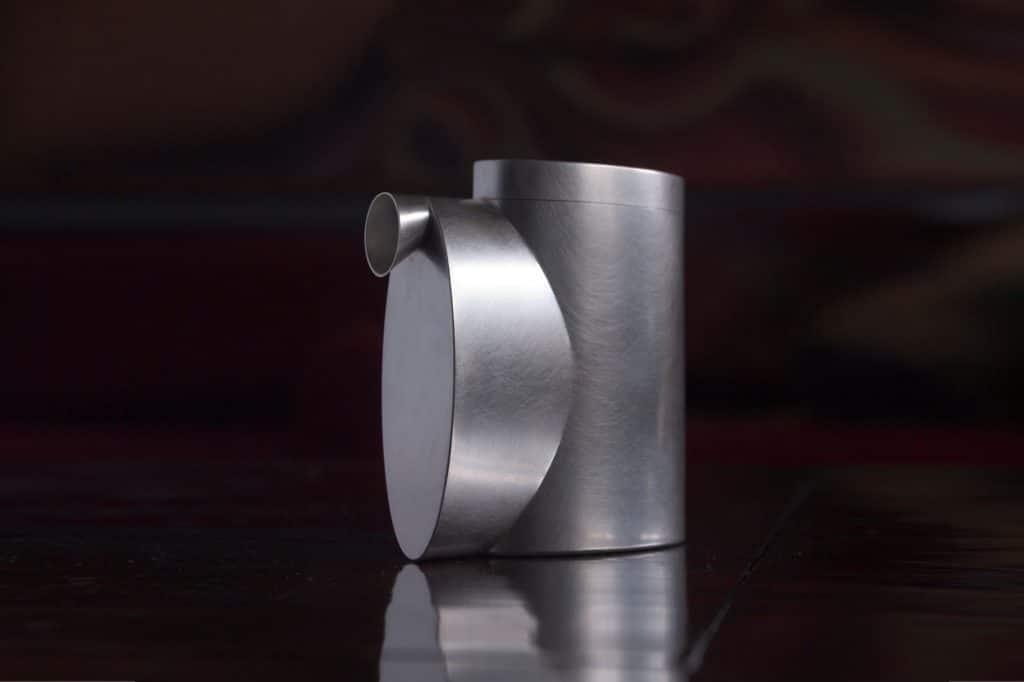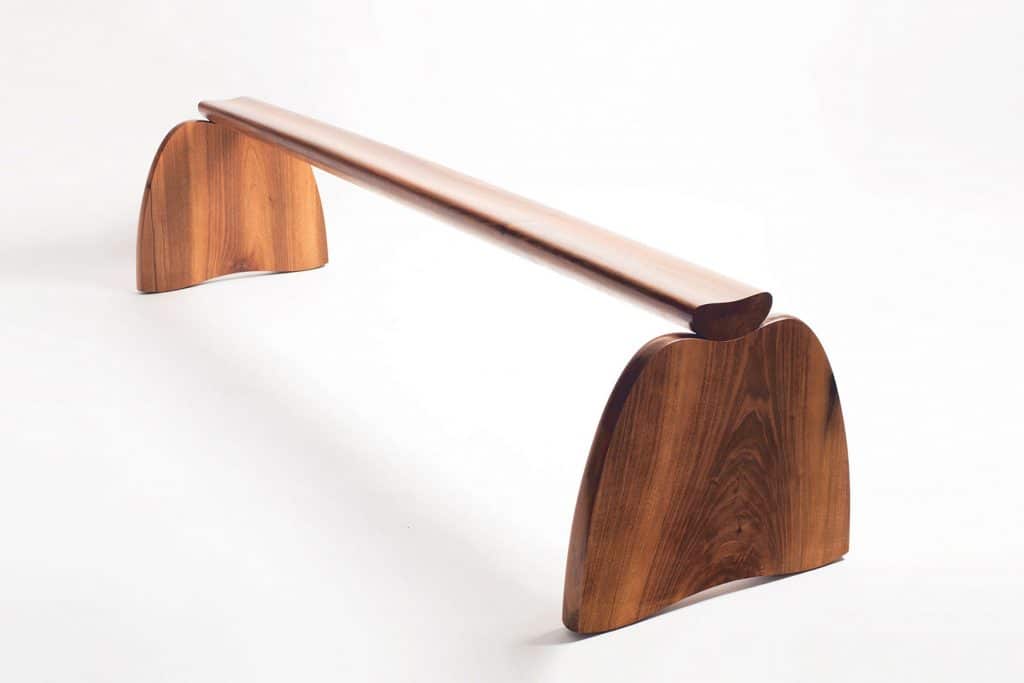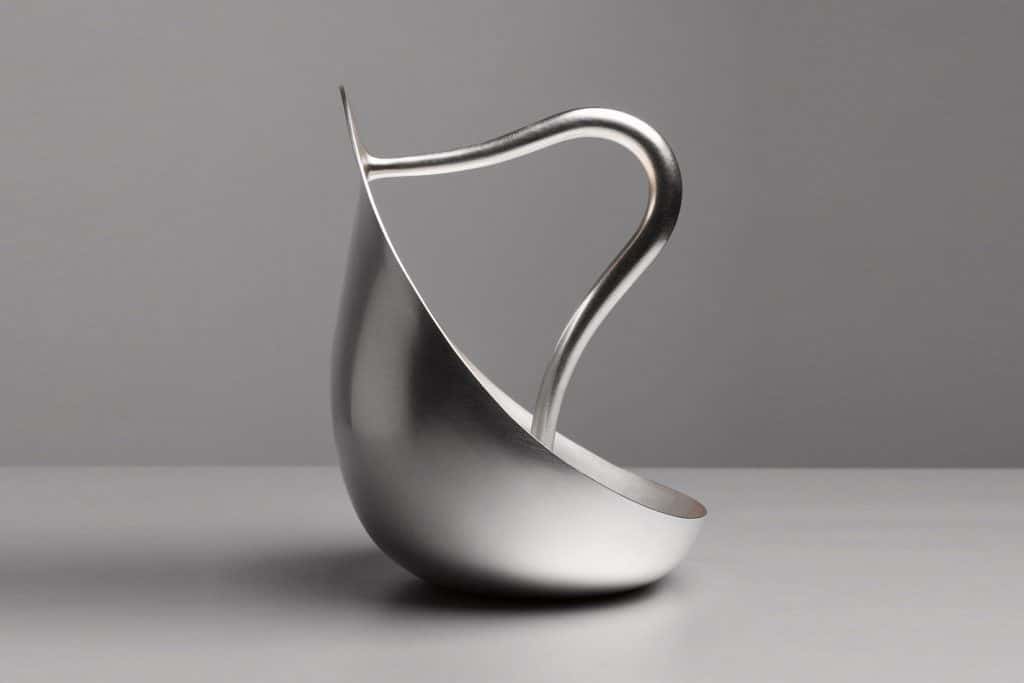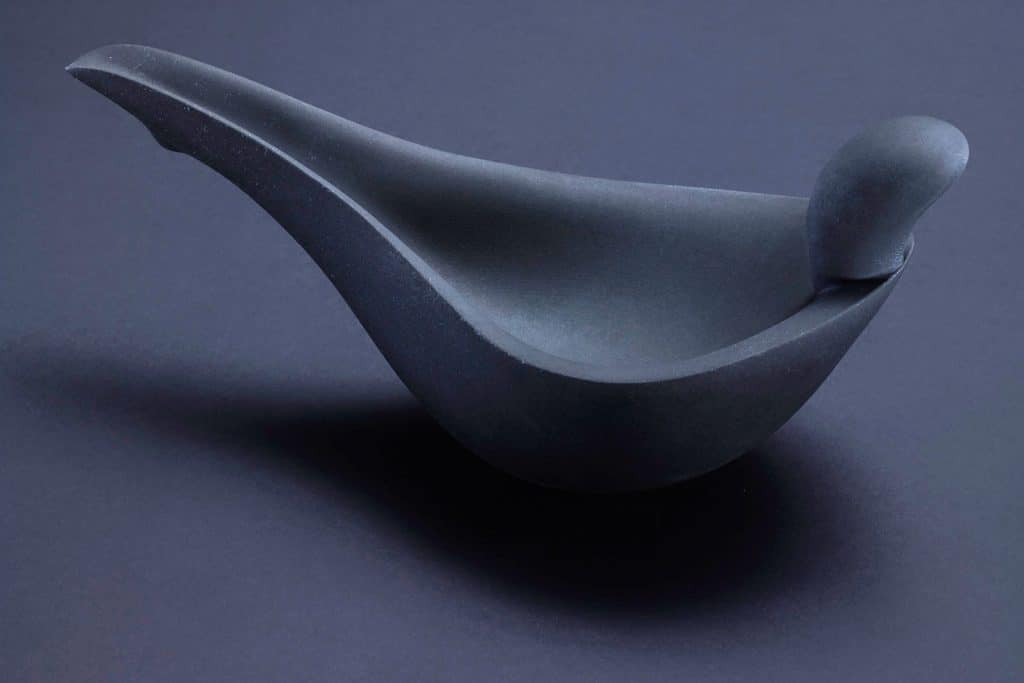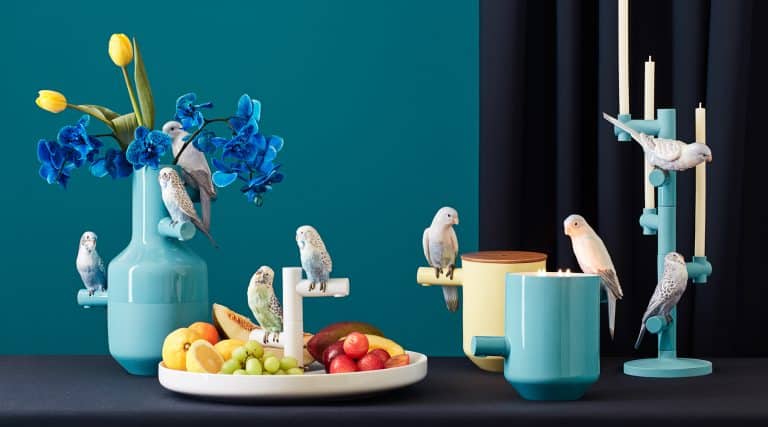
November 11, 2018Aldo Bakker relies on instincts when designing furniture and objects, often collaborating with craftspeople to refine and execute his vision. Top: A Tonus in wood, 2013. Portrait and photo by Erik and Petra Hesmerg
If the words “contemporary Dutch design” bring to mind the wildly conceptual creations of companies like Droog, such as belted-together drawers and chairs seemingly made from macramé, Aldo Bakker will gently expunge your expectations. Rather than focusing on cultivating clever ideas or show-stopping conversation pieces, he is primarily interested in sensual forms and natural beauty, producing objects that appear to have more in common with the organic shapes of Eva Zeisel than the whimsical designs of Marcel Wanders.
So, it may be surprising to learn that Bakker’s parents helped define the contemporary Dutch look as we know it. His father is Gijs Bakker, the designer and cofounder of Droog, and his mother is Emmy van Leersum, the avant-garde jewelry maker who collaborated with her husband on monumental collars, bracelets and headpieces that set the fashion world atwitter in the 1960s and ’70s. Despite being raised by such provocateurs — or, more likely, perhaps because of it — the younger Bakker has found a quieter path to acclaim.
“My main motivation is to work on an oeuvre that stands on its own and separates itself from the rest,” says Bakker, whose latest creations are the subject of the exhibition “Aldo Bakker & The Masters,” at Les Ateliers Courbet in Manhattan through January 7, 2019. “I’m not a classic designer who responds to a question or a certain brief.”

Installation view from “Aldo Bakker & The Masters” at New York’s Les Ateliers Courbet. Items by Bakker on display include a Swing chair, one leg stool and silver carafe. Photo courtesy of Les Ateliers Courbet
Indeed, as a student, Bakker was so impatient with the conventions of design school that he dropped out after just a few months (although he went on to become a longtime instructor at the Design Academy Eindhoven), choosing to learn by making instead.
He says he almost never starts a project with the intention of creating a specific type of object, such as a chair, a table or a serving vessel. Instead, he begins with an intuition about form, much like a sculptor. “I listen to my feelings and try to be sensitive to those moments when something pops up,” he says. “When the right feeling is there, I’m able to make a start at something.”
Typically, that means spending months or even years producing drawings and models in his studio, refining ideas for a particular shape before deciding what sort of object it should be. Then, he usually partners with a craftsperson capable of making it in a specified material, like silver, glass, ceramic, wood or lacquer. At that point, the shape evolves further. “In the execution, there is always the signature of the craftsman,” Bakker says. “When you click with a craftsman, you share a way of seeing and judging things.”
The shapes that come to Bakker’s mind spring from a lifetime of trying to understand both the fundamentals of geometry and the reasons existing objects look the way they do. “From the beginning,” he says, “I’ve been questioning the square, the circle and the triangle in order to understand what they mean to me and how I can make use of them. I have learned a lot from looking at images again and again and questioning why a line is the way it is, where it comes from and how one line relates to the next line.”

Aldo Bakker’s pieces adorn a credenza in John Legend and Chrissy Teigen’s New York home. Photo by © William Waldron/OTTO
That process of mentally stripping objects down to obtain a deeper understanding of form has led to limited-edition pieces like the one leg stool (2006), which has a plump base on one side and a slender leg on the other (it is now in the permanent collection of the Stedelijk Museum Amsterdam). Another fruit of this process is Tonus (2013), a sinuous tripod resembling some oceanic mammal that functions as a stool or side table when produced large-scale in wood or lacquer (an example is in the permanent collection of the Centre Pompidou) or as a pure sculptural object when made as a smaller-scale bronze. Bakker’s tabletop objects include Fat One, a silver creamer that evokes a squat pear, and Chalice, a Sèvres porcelain vessel that would look perfectly at home in a garden of lilies.
“There’s something wonderfully splendid about his work,” says the New York interior designer Alexandra Champalimaud, who has purchased one of Bakker’s stools for herself. “His pieces are sculptural, fluid and curvaceous. They have enormous ingenuity.”

The porcelain Alinetob, 2013, resulted from a collaboration between Bakker and Sèvres. Photo by Erik and Petra Hesmerg
For the exhibition at Les Ateliers Courbet, gallery founder Melanie Courbet had Bakker collaborate with Wiener Silber Manufactur. The result was a pitcher made from a single sheet of silver that swoops and shimmies to create an integrated handle and spout.
“His work is magnetic because of its sensual appeal,” says Courbet. “And yet, it’s slightly uncomfortable, because you’re not always sure what to do with it. I think he likes to create that moment. He makes users very attentive to their interaction with the object. It’s about the experience.”
Despite his unconventional process, Bakker has designed a number of pieces for large manufacturers, including crystal vases and bottle stoppers for Swarovski and tables and stools for Karakter. But these kinds of projects don’t come easy for him.
“From the moment there’s a specific question to design something, an image grows in my mind of what the client expects,” says Bakker. “This is something I cannot help, and it stands in the way of the original thoughts I’m looking for.”
Bakker is much more comfortable working in the mode of an artist, with the absolute freedom to create. “In the end,” he says, “it’s a choice.”
